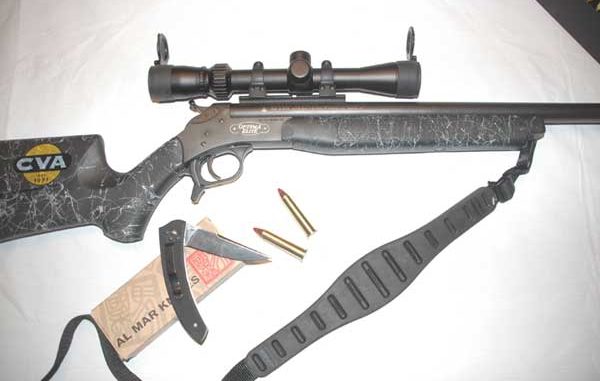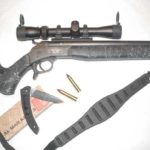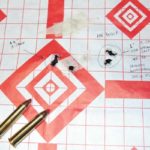
The spoil banks of Louisiana’s marsh hold more than their share of bushytails.
The late, great Robert Ruark wrote for many of the big outdoor mags in the 1950s and ’60s, and began a series of columns that would become one of the all-time hunting classics, entitled “The Old Man and the Boy.” I devoured everything he produced.
Ruark wrote about all kinds of hunting, and his greatest love was hunting in Africa — going out in the bush and “walloping” a variety of game, including a lot of species that would attack, run over and sometimes try to eat you.
His joking reference to “walloping” game referred to the immense cartridges used on safari, and what they did to the animals hit by them.
Now, after all these years, I have had an epiphany — I now know what Ruark was talking about.
I spent the afternoon testing and firing a break-action, single-shot rifle from Connecticut Valley Arms, one of the biggest manufacturers of primitive firearms in the country.
The rifle they sent me to test is their new Optima Elite, which has interchangeable barrels. You can go from .45- or .50-caliber muzzleloader to a single-shot, open-hammered rifle in quick time, and the choices of calibers go from .222 all the way up to the venerable .45-70.
Since more states are expanding the definition of primitive weapons, what used to be called “muzzleloader season” is considerably more in some areas. Some states now consider a firearm “primitive” if its design and the cartridge it fires were in production before 1900.
Enter the CVA Optima Elite in .45-70. The cartridge is a classic, of course. It was carried by the U.S. Army, saw action in the Indian Wars and fed a lot of buffalo meat to railroad men during the push to cross the continent with rails.
The designation referred to a .45-caliber bullet, pushed by 70 grains of blackpowder — a stout load that decisively stopped anything with less mass than a steam locomotive. The cartridge has remained popular, and many well-known rifle manufacturers still chamber rifles for it.
CVA has done it right on this package. The gun I received had a premium Bergara barrel manufactured in a region of Spain famed for producing fine firearms. Famed custom barrel maker Ed Shilen consulted in the design and manufacture of these barrels.
Everything about this gun bespeaks quality. I was impressed with the whole package, which is hunt-ready, allowing you to sight it in and go to the woods.
The package consisted of an injection-molded stock attached to the Bergara barrel. This had a Bushnell 3×9 variable scope attached to it with pop-up scope caps, a contoured sling and one of the most comfortable and effective recoil pads I have ever pressed into my shoulder.
The scope was attached to the barrel with a type of rings and mounts new to me. Durasight’s Z-2 alloy is claimed to be 50-percent stronger than aluminum, yet is priced about the same.
The vertical split rings were generously proportioned, and looked strong and solid. The clasping grooves on the bottom base were deeply cut, and held in place by Torx screws.
The sling bears mention. Quake Industries manufactures an entire line of contour slings for long guns they call “The Claw.” The pad is molded into the sling webbing, allowing about ½ inch of stretch. This spreads the weight of the firearm on your shoulder, greatly increasing the load-bearing area.
I don’t know what CVA did to come up with their recoil pad on the Optima Elite — it’s called “Crush Zone,” and that aptly describes its effectiveness. I shot near a box of Hornady LeveRevolution 325-grain .45-70 ammunition in the late afternoon, wearing nothing on my upper torso but a T-shirt.
The recoil from this cartridge on this 7-pound rifle is fierce. Under most cases, my shoulder would look like hamburger the next day, but I barely showed a bruise. The Crush Zone recoil pad is an excellent addition to an excellent system.
So after all these impressive cosmetics, how did the rifle shoot?
The picture tells the tale. Once I got it tuned in and settled into the gun, it brought in impressive groups. Only after finishing the session did I realize the targets had been set up at 115 yards instead of the standard 100.
The target pictured shows two groups of three. The first had two bullet holes touching, and another landing just inside an inch.
It was gratifying to turn the Bushnell scope 12 clicks to the left (each click is ¼ inch of movement at 100 yards), and see the next bullet move almost exactly 3 inches to the left, and print 2 inches above point of aim.
The next bullet touched that hole. The next was a flyer — probably the result of aging eyes needing a more powerful scope. The group still fell within 1½ inches.
The CVA brochures claim custom performance without the custom price. Indeed, the package delivers as promised.
What is there to say? CVA has a winner here. This is an interchangeably barreled rifle that will allow the dedicated hunter to hunt muzzleloader and centerfire. A cartridge that prints thumb-sized holes in paper, travels 2,050 feet per second, allows you to print 3 inches high at 100 yards and prints only 4 inches low at 200 yards is definitely going to “wallop” a deer — or anything else on the North American continent you want to hunt.
While he has been gone for many years, I can’t help but think Ruark would have approved mightily of this rifle and loved the new Hornady cartridge.
Gordon Hutchinson’s newest book, written with Todd Masson, is The Great New Orleans Gun Grab. A searing expose’ of the scandal of gun confiscations in New Orleans in the aftermath of Hurricane Katrina, it is available online at www.neworleansgungrab.com or from the publisher at (800) 538-4355.
Hutchinson’s first book, The Quest and the Quarry, is a celebration of Southern hunting. It’s a generational tale that parallels the lives of a line of trophy bucks and the youths of a farming family that hunts them. It was chosen as a Book of the Year by the Southeastern Outdoor Press Association. It is available on-line at www.thequestandthequarry.com, or call the publisher at (800) 538-4355.




